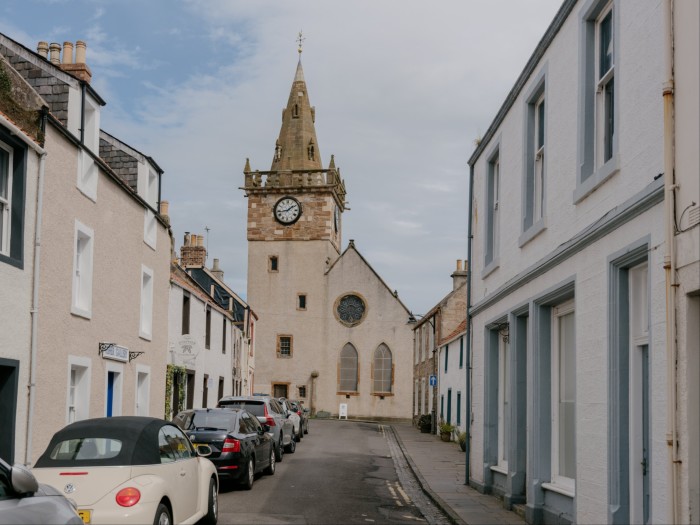The medieval villages of East Fife are beautiful — Crail, Anstruther, Pittenweem, St Monans — the houses embracing the harbours that were once the source of their living, and are no longer.
They had been all about fishing — especially the two largest ports, Anstruther and Pittenweem. Many of the boys, my companions in the local comprehensive school, left at 15 to crew the boats, mocking us who stayed on; they were hardening themselves to the rugged trade of fishing, while we were led through trigonometry and Macbeth.
None of my Anstruther family, local tradespeople for generations, had been fishermen, but lived from their work: my grandfather, an engineering craftsman, made part of our living by mending the boats’ diesel engines. My mother, a beautician, made the other part, busiest when the women from the oilskin factory clamoured for a facial before the men came back at the weekend.
Those of us who left to discover how mathematics and Shakespeare would help us through life often didn’t come back, except to visit, usually briefly, to show off what success we had, explain away the lack of it — then off again. Yet in the decades away, a profound shift had taken place, unseen even as I looked — until, recently, I was taught by old friends to look harder.
The beauty remains, indeed has been renewed; but two great losses had taken place. These are of adhesion to a church that has provided moral guidance for half a millennium; and of community, which had been brought together by a common work and social ethic. I was aware I had, carelessly, absorbed these losses long since: only now aware that they were depletions, unable to recover either.
The decline of organised Christianity in the Church of Scotland is well advanced. The East Fife churches, some built in the flourish of Victorian performative spirituality, have tiny congregations. In one of these churches, in the little village of Kilrenny, I attended a Sunday service, along with 20 or 30 others. A friend, Gordon Craig, a retired minister, said of his colleague, without irony: “He’s doing well!”
The people have largely withdrawn, and now the Kirk — as it’s always called — is itself withdrawing. Its finances are stretched, new ministers are scarce, congregations scarcer. It has neither archbishop nor pope: these were consigned to the devil centuries ago. Instead, in offices in Edinburgh’s New Town, a web of committees has decreed a deep cut in the Kirk’s churches in Scotland, presently numbering between 4,000 and 5,000.
I talked to Fiona Smith, a minister who was appointed last year as principal clerk to the General Assembly of the Kirk. Various figures for the required cuts have appeared, in part because parishes are still coming to terms with the need for cuts of some sort, and arguing with the central administration. Smith says only that “you can’t escape the fact that numbers are down and the congregations are mainly elderly. Too many churches. We must look to the resources God has given us.” But, she added, “I don’t find the numbers today disheartening. It’s about loving God and loving your neighbours.”
In Pittenweem, where the kirk dominates the high street, I talked to some of those who were protesting against the decreed closure but had all but given up: none wished to be quoted. They had fallen back on the argument that many older folk had been baptised and married in the church, had their children baptised there, and wished to be buried by the minister: their loss is the most acute.
Yet as the group was constrained to recognise — had they been successful, the town would have been left with the same tiny, financially unsustainable congregation. One said: “I don’t know if people want religion — except for funerals.” An elderly man, erect in his chair, put the dilemma simply: “No congregation, no church.”
As I listened, it seemed that the loss of Christian faith, and the parallel loss of a close, communal culture, were matters of no great moment. If these losses meet with apparent indifference, or weary resignation, in the medieval villages of East Fife, they may do so everywhere: something of the kind, in widely distinct forms, is happening all over the western world. Is the importance attached by many to faith, many more to community ethics, merely an archaic throwback? Has Christianity, as the historian Tom Holland argues in Dominion (2019), passed into secular behaviour — as human equality, charitable enterprise, social care — and thus fulfilled its core function, requiring no threnody?
The most distinguished town in East Fife is St Andrews, whose university the Guardian selected this year as best in the UK, and where, in 2001, the Prince of Wales met his princess. The Church of Scotland fares little better here than elsewhere: but the university church has a fine choir and pews at least half filled.
I met Ian Bradley there, an emeritus professor in the School of Divinity. He’s an English-born Church of Scotland minister, jolly and polymathic, author of many books and a stream of fluent journalism. In his 1992 book Marching to the Promised Land, he writes that a secular society has existed since the 1960s, and quotes a forecast that, on the present rate of decline, the last church will close in 2047. He notes, though, that a decent percentage testifies to “being religious”. Yet what does that mean, if untethered from belief?
Donald MacEwan, the university chaplain, articulate and clever, says the church to which he has given his life is “increasingly not part of the society. Belief in God is shrinking.”


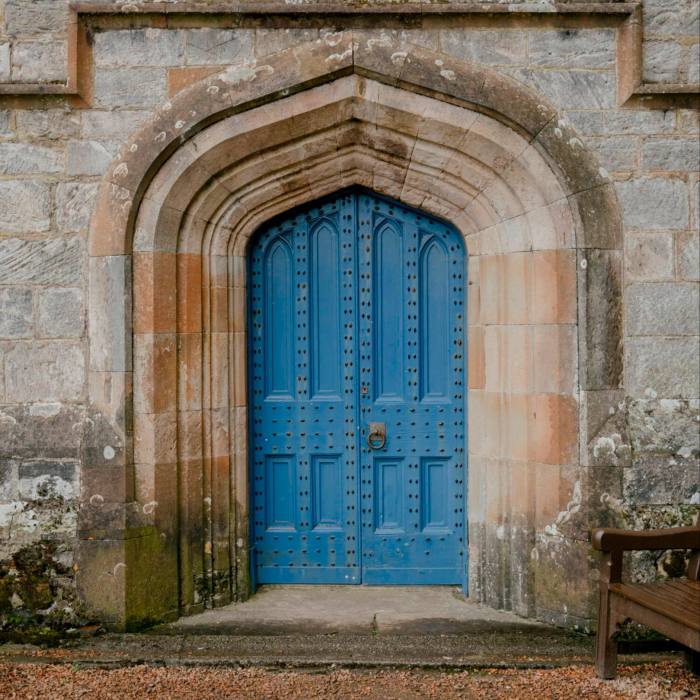

His first charge was the 14th-century church in the village of St Monans. He was attentive to the faithful in the congregation and the unfaithful outside it; his wife, Maia Sheridan, a manuscript archivist, put on medieval mystery plays in the medieval church. “Mine’s a classic Church of Scotland approach,” says MacEwan, “and as recently as the noughties, it could still have real purchase.”
The purchase is weaker now. Active and innovative, he chides his church for “fearfulness . . . When people are afraid of the future, they shrink from it.” Growth there is, but beyond the Kirk: a shift in Christian worship now globally evident.
Evangelical churches — long part of the Scots religious scene — are now reviving, especially for the young who pack hired halls, while the great edifices cannot find ministers, let alone congregations. Bradley writes of the “invisible church”, where “Satan is viewed as a personal opponent”.
An enthusiastic example, very visible, is Cornerstone St Andrews — evangelical, in the Presbyterian tradition. Jared Michelson, an American with a theological PhD, is its pastor. “If all the church is saying [is] you should care about racism, care about the environment — these things are important, but they are redundant. You must go beyond that, to talk of faith and a life of faith. The danger is to be content to tell just so stories. There is a temptation to stay within a liberal circle of good things.”
Learning that the evangelical flame burnt brightly in the north, I went to Inverness to meet two young men, blazing separate but parallel trails to Jesus. Innes Macsween, in his early thirties, forthright and hearty, is “planting” — as evangelicals say — a church in the Free Church tradition in Tornagrain, a new development near Inverness airport: he claims 60 or more already come to his services.
“Things began to change in the churches — especially in the north. People began to ask — what is God’s authority? What is his rescue mission? The Enlightenment tells us that the absolute authority is our mind, our reason. But faith has a higher authority.”
He is more brusque about the faltering Kirk than Michelson. “Being nice only gets you so far. You need to go back to the resurrection. See First Corinthians 15.” (Corinthians, based on letters written by Christ’s disciple Paul, reads: “If Christ is not risen, then is our preaching vain, and your faith is also vain.”)
“Resurrection is a fact, we must see it as historical, true. On Genesis there can be debate. But if the resurrection is not true, then Christians are to be pitied.”
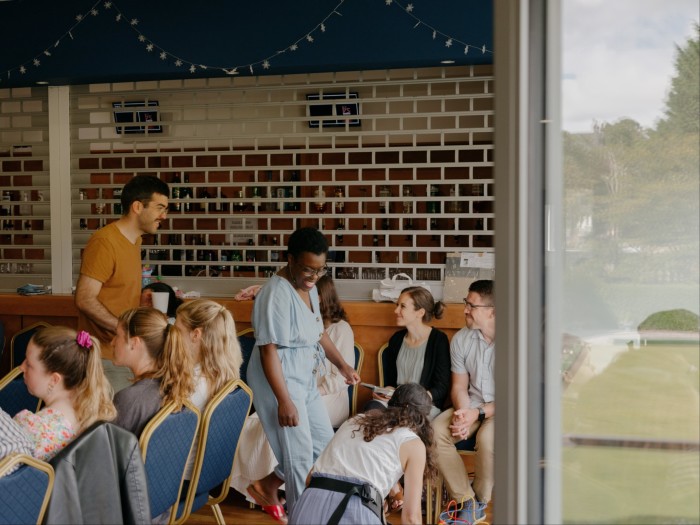

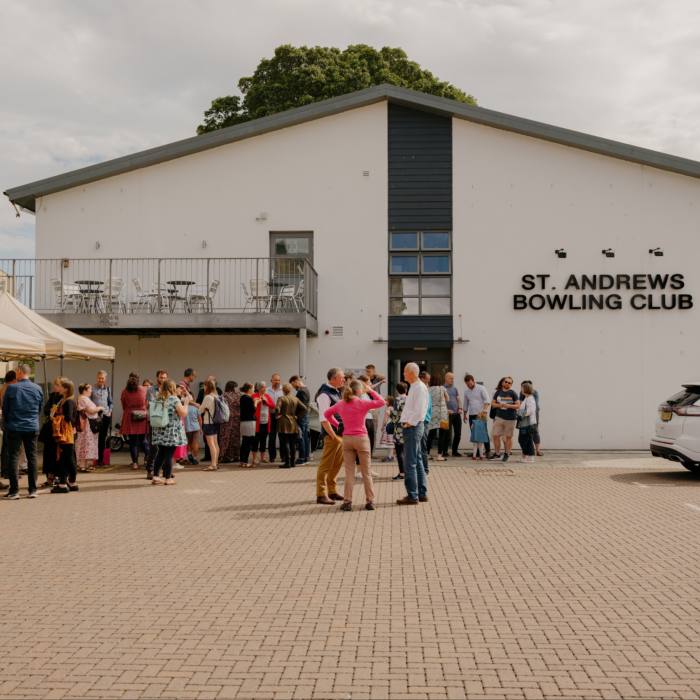

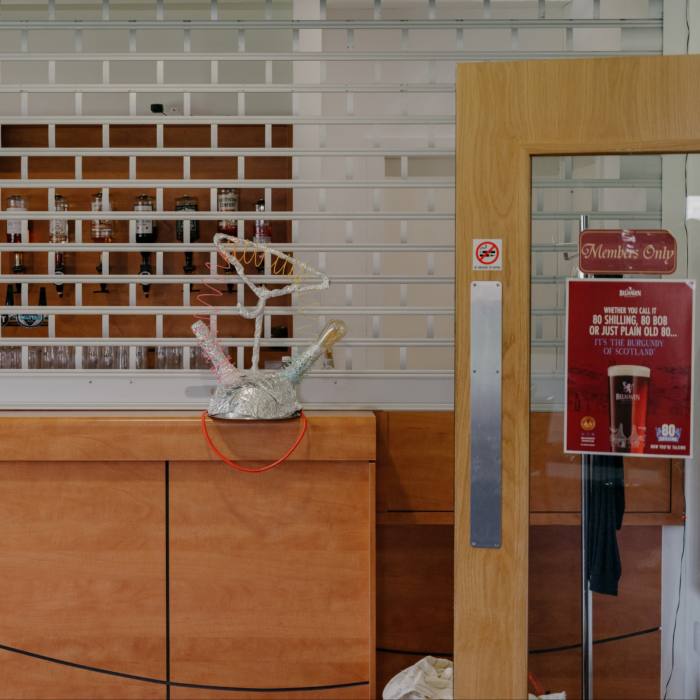

Pete Rennie has planted an independent evangelical church in the new Westercraigs estate in a rapidly expanding Inverness. “The young are massively interested because they haven’t heard anything of the power of Jesus from their parents. The closures are a symptom not a cause. The Kirk has neglected scripture. People see relativism in its teaching. This post-truth approach leads on to chaos. In a world where everything is fluid, you need a solid base.”
Back in St Andrews, I went, on a Sunday morning, to the Cornerstone service. The hall it uses, in St Andrews Bowling Club, was standing room only, upwards of 100 people: the club’s well-stocked (shuttered) bar is on one side. I was told this was half the usual attendance, since the university students were on holiday: in term time, the church has two morning services. Children were directed to a room marked “Breakfast with Jesus”.
There were prayers and songs, many specially written. One had a chorus:
God’s love is big
God’s love is great
God’s love is fab
And he’s my mate
This does not have the beauty of, say, the 18th-century hymn “Come, Thou Fount of Every Blessing”: yet it’s sung lustily. However fine the hymn, little is more desolate than its singing by a handful of embarrassed congregants in an echoing church.
Heather Holdsworth, a member of the leadership team, gave the sermon. Jovial, empathetic, she told little stories: her car battery flat, she prayed to God to help, then said to herself: “Why would He bother about this?” Parsing the Lord’s Prayer and picking up from the line “For thine is the kingdom”, she said, “We live in the kingdom of Fife, and we have ‘commandments’ — have white teeth, have lovely hair. But at a funeral the other day, people didn’t talk about the person who died having white teeth and good hair. They said she had been kind.
“We ache, for another kind of life.”
When she came to the line “Forgive us our trespasses”, she told the story of Theo, a friend from Burundi, dispossessed in one of its many wars. When peace came, he returned to his house to find it occupied by one of the invaders. He vowed revenge: then thought, if Jesus, at the foot of a cross of slow death, could say “forgive them, Father”, then so could he.
Holdsworth’s husband works with the Chalmers Institute, which Jared Michelson told me is a valued resource for Cornerstone. It is directed by Mark Stirling, a former doctor, who was also involved in setting up Cornerstone. The institute is named after Thomas Chalmers (1780-1847), born in a small merchant’s family in Anstruther, who became the most influential divine in Scotland — formidably gifted, pious and charismatic. Yet in his work with the wretched early industrial workforce of Glasgow, he insisted that the poor came to God before receiving aid — and such was his reputation that most fellow Kirk ministers followed him.
It meant that working-class membership of the Kirk started in the upper working class, among relatively secure craftsmen and overseers. Catholics, mainly Irish coming in many thousands in the 19th century to work in Glasgow and Paisley factories, could find absolution for all amid the relative splendour of their churches: an absolution the Presbyterians could not expect to have, except through God’s selective grace. They remained, in their plain kirks, beset with their sins before God and Chalmers. My mother would bait my Polish stepfather, a Catholic, with having an unfair advantage in the matter of sin, the confessional allowing him to “get away with it”.
A religious revival can’t be discounted — especially in a world of increasing threats. But the largest matter remains faith. MacEwan’s bleak observation, that “belief in God is shrinking”, hangs over all — except, for the present, those who celebrate most uninhibitedly. “God’s love is fab.”
That which had bound the communities thinned with the faith. The French sociologist Émile Durkheim believed that religion’s main function was social, and wrote in 1912 that it carried “a unified system of beliefs and practices . . . which unite into one single moral community called a Church, all those who adhere to them”. The Kirk now largely lacks the ability to unite a single moral community: the evangelicals step up to fill the gap.
In the last decades of the 20th century, Anstruther’s oilskin factory closed, as did the Smith and Hutton yard, which fashioned wooden-hulled boats up to 90ft long: remarkable craftsmanship. Its space is now taken by the Scottish Fisheries Museum — a fine collection, its presence testifying to the ending of the real thing. I asked Ronnie Hughes, a former skipper I know, how he would describe the contemporary culture of the place. “Tourism,” he said. “Cafés.”
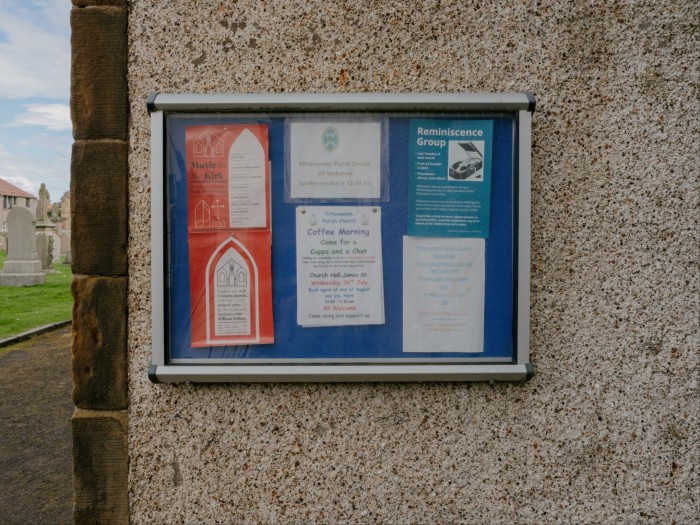

Yet these villages, unlike many others, are doing well. House prices have been rising for years. In Anstruther, the harbour is full of pleasure craft, none larger than the motor launch of an oligarch’s superyacht, but vastly outnumbering the few fishing boats remaining.
Skipper Hughes sold his “Mairead” in 2002, as the whitefish shoals thinned out, too many boats chasing too few fish. The remaining boats now go out on short trips, catching shellfish — crabs, lobsters, prawns. They no longer command the society, as the successful skippers had, their catches and (comparative) wealth the talk of the towns. Says Hughes: “You know Pittenweem Shore Street? Every house on it was a fisherman’s house. Now none are.”
He isn’t speaking from bitterness, though others do, seeing the “incomers” — especially those who buy second homes, pushing prices beyond the young locals’ reach — as “taking over”. He’s too active for that: he conceived the idea of crafting a memorial to commemorate the hundreds of men who, over two centuries, had drowned. He and his group collected £75,000 — much of that in small donations in cans placed in shops.
That allowed them to commission the sculptor Alan Herriot to fashion a life-size bronze statue of a young woman with her son, looking anxiously out to sea, standing to one side of the harbour. It was unveiled in September 2019 by a Pittenweem man, Ian Bowman, whose son had drowned years before. It’s poignant, a summation in bronze of the price of fish.
In “Abide with Me”, another much favoured hymn, a line reads — “Change and decay in all around I see.” The boroughs of East Fife are changing, at their very roots, yet hardly decay: Pittenweem’s Shore Street has been smartened up, as has Anstruther’s Castle Street, where the homes are mostly second ones.
But the loss of a culture that was shared, with the loss of a moral centre of faith to which most became seemingly indifferent, is a local iteration of a western transformation. It may yet be preparing a bill of sorts, for the heedless consumption of a community’s pillars.
John Lloyd is an FT contributing editor
Find out about our latest stories first — follow @ftweekend
Credit: Source link



